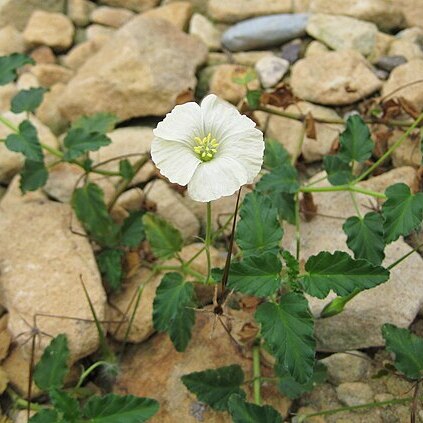Stamens 15, all fertile, connate at the base, in 5 bundles of 3 filaments each, the central filament of each triad being longer; extrastaminal glands present, 5, adnate to the base of the longer central filaments, sometimes inconspicuous; anthers versatile.
Fruit a rostrate schizocarp; mericarps rostrate, 1-seeded, obliquely truncate at the apex of the basal portion and tapering towards the base, hirsute; rostrum persistent, helically twisting when ripe, plumose on the inside.
Annual or perennial herbs (sometimes with annual shoots arising from a woody basal region) or suffrutices; erect or decumbent, rarely acaulescent; variously pubescent, usually glandular.
Leaves petiolate, stipulate, opposite or alternate, serrate, dentate or crenate, sometimes lobed or dissected; stipules filiform to subulate or rarely spinescent.
Ovary 5-lobed, 5-locular, rostrate; loculi 2-ovulate; style absent; stigmas 5, clavate or filiform.
Inflorescence a 2-several flowered pseudumbel (or flowers solitary).
Pedicels often sharply bent when in fruit; bracts present.
Seeds ± oblong-obovoid; endosperm absent; embryo curved.
Petals obovate, often with a truncate or lobed apex.
Sepals imbricate, apiculate with membranous margin.
Flowers actinomorphic, 5-merous.
